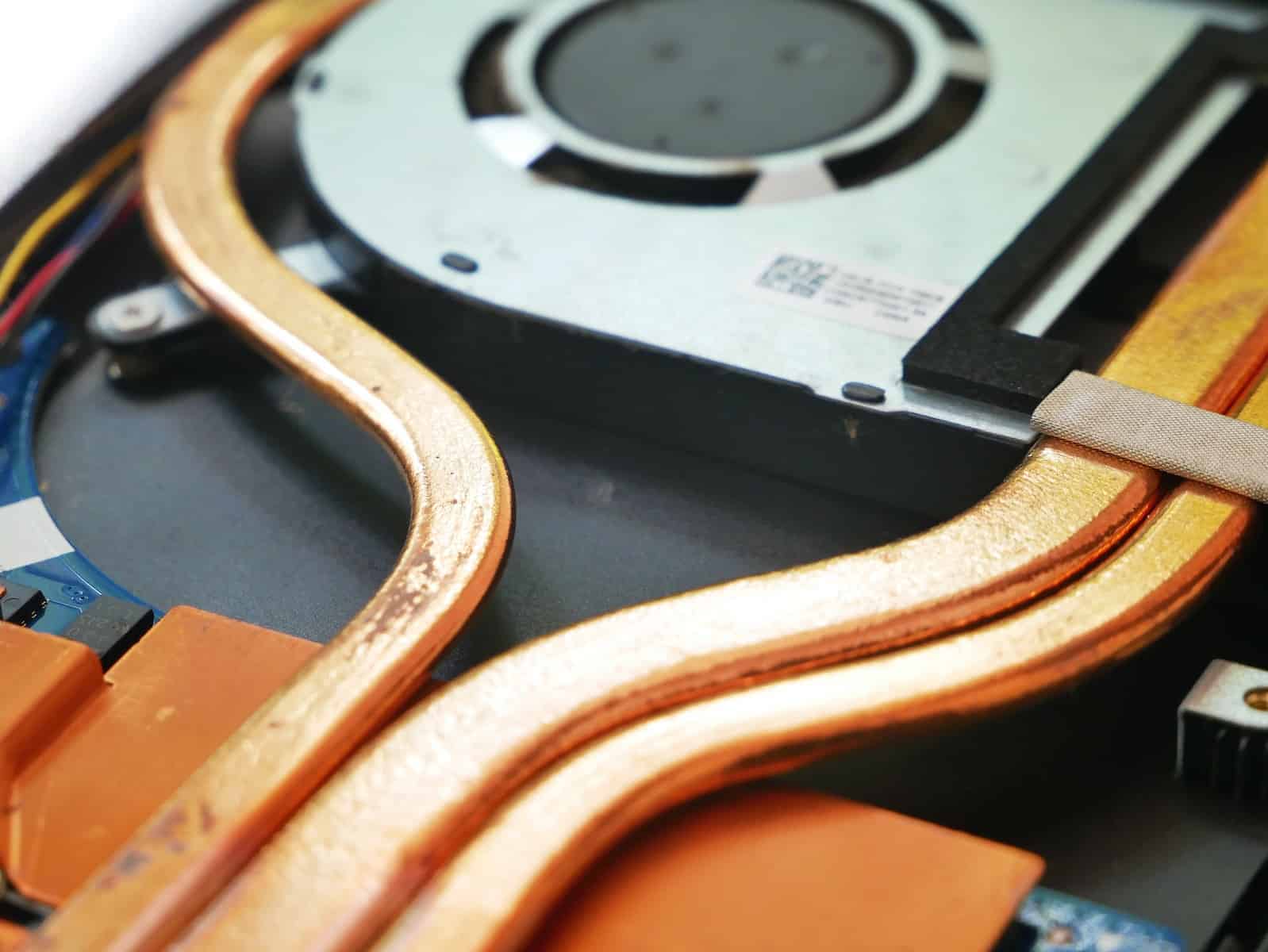Laptop overheating is a common problem that can reduce efficiency and potentially damage internal components if not addressed promptly. For ASUS laptop users, it’s important to know how to diagnose cooling system issues, such as fan malfunction. Proper troubleshooting can help pinpoint the exact cause, whether it’s dust blocking the air vents, outdated BIOS, or an overloaded CPU straining the cooling system. Once the issue is identified, there are practical solutions to resolve fan problems.
Updating the laptop’s BIOS, adjusting fan settings, ensuring adequate ventilation space, and performing hardware diagnostics are all part of a comprehensive approach to managing your ASUS laptop’s temperature. Regular maintenance, like cleaning the air vents and monitoring for unusual processes that use a lot of resources, can prevent future overheating issues.

Dealing with an Overheating Asus Laptop? Troubleshoot Your Fan
Laptop fans are crucial for keeping your device cool. Fans keep those hardworking internal components running smoothly. Overheating can lead to performance issues and even damage your laptop. Is your Asus laptop sounding like a jet engine or randomly shutting down? Here’s your troubleshooting guide.
Basic Troubleshooting Steps
Before you take apart your laptop or call a technician, let’s go through some simple steps that might solve the issue:
- Check Power Settings: Ensure your laptop’s power mode isn’t set to “silent” or “power-saver.” These modes can restrict fan activity to reduce noise and energy usage.
- Ensure Proper Ventilation: A laptop needs space for air to flow. Use it on a hard, flat surface and make sure nothing is blocking the vents.
- Close Resource-Hungry Programs: Close unnecessary applications that eat up a lot of your processing power. Check “Task Manager” on Windows or “Activity Monitor” on Mac to pinpoint them.

Updates and Drivers
Outdated software can sometimes cause issues. Here’s what to check:
- BIOS Updates: Check the ASUS website for the latest BIOS updates for your specific laptop model. Install them if available.
- Driver Updates: Make sure your graphics and chipset drivers are up-to-date. These can often affect your fan’s operation.
Dust: It Happens
Dust accumulation is the enemy of laptop cooling. Here’s how to handle it:
- Compressed Air: Blast short bursts of compressed air into the vents to dislodge built-up dust.
- Careful Cleaning: If compressed air doesn’t do the trick, you may need to open your laptop for deep cleaning. Proceed with caution as this could void your warranty.
Hardware Check with MyAsus
Many Asus laptops come with a useful diagnostic tool:
- MyASUS: Launch the MyASUS software on your laptop.
- Hardware Diagnostics: Look for the “System Diagnosis” or “Hardware Diagnostics” option and run the test on your fan.

Still Having Trouble? It Might Be Serious
If the issue persists, here’s when it’s time to call in outside help:
| Issue | What it Might Mean |
|---|---|
| Loud, Constant Fan Noise | Potentially a bearing issue within the fan, requiring replacement |
| Fan Doesn’t Spin at All | Likely a dead fan or connection problem |
| Laptop Overheating Despite Fan Working | This could indicate a more serious internal hardware problem |
If you’re uncomfortable with hardware troubleshooting or your laptop is under warranty, contact ASUS support or visit an authorized repair center.
Key Takeaways
- Identifying fan issues in ASUS laptops is crucial to prevent overheating.
- Solutions include BIOS updates, fan mode adjustments, and maintaining clean vents.
- System diagnostics and regular maintenance can enhance laptop cooling efficiency.
Diagnosing Fan Problems
Recognizing and handling fan issues in an ASUS laptop is key to maintaining its performance and longevity. When a fan stops working or makes unexpected noise, it’s often a sign that the laptop is at risk for overheating. Here are the steps to make sure the fan system functions properly.
Initial Checks and System Diagnosis
Before disassembling your laptop, start with some basic software checks. Open the Task Manager to spot irregular CPU or memory usage which could overload the fan. Software like MyASUS can run a hardware diagnostic to identify any hardware issues. This tool examines fan speed, sound, and overall system stability.
Physical Inspection
If software diagnostics suggest a problem, shut down your laptop and inspect the air vents. They should be clear of dust, hair, and debris. If the fan doesn’t spin or there’s unusual noise, the issue might be with the fan’s hardware. It could be due to a loose fan connector or blockage in the vents. Carefully open the laptop chassis if you are comfortable with it and your laptop’s manual guides doing so.
Temperature Assessments
Regularly check your laptop’s CPU/GPU temperature to ensure it’s not overheating. High temperatures may mean there’s insufficient cooling. Using a cooling pad can help lower temperatures, particularly when running resource-intensive programs or in high ambient temperatures. Make sure you maintain a suitable working environment for your laptop to prevent overheating.
Fan Solutions and Optimizations
When your ASUS laptop fan encounters issues, taking the right steps can prevent overheating and ensure optimal performance. This guide offers clear solutions and proactive tips to keep your device cool.
Corrective Actions and Cleaning
Initially, check if the laptop is on a firm and flat surface to promote passive cooling. Overheating can occur when ventilation is blocked. If the fan runs at high RPMs and the device is still hot, dust buildup may be the culprit. Turn off the laptop, remove the power cord, and clean the air vents using compressed air cans. This action often resolves minor overheating issues.
Hardware and Software Updates
Regularly updating your BIOS, Windows 10 or 11 packages, and drivers is key to maintaining your ASUS laptop. ASUS Intelligent Performance Technology, for instance, manages fan speeds to balance cooling and power consumption. Always keep your antivirus software up to date to prevent malware that may cause abnormal CPU or GPU usage, leading to higher fan speeds and potential overheating.
Component Replacement and Support
If the problem persists, ASUS’s customer service center provides support for notebook, desktop, all-in-one PC, gaming handheld, or MiniPC. It might be necessary to replace the CPU fan, GPU, motherboard, power supply unit, battery, or graphics card. Contact an ASUS service center for professional help. They can expertly determine if component replacement will resolve your performance issues.
Frequently Asked Questions
In this section, we address common concerns about Asus laptop fan issues, providing you with clear and practical solutions.
What are the steps to diagnose fan issues on an Asus laptop?
To check fan issues on your Asus laptop, first look at the CPU and memory usage via Task Manager for unusual processes. Then, confirm that vents are not blocked and the fan is clean. You can also run a hardware diagnostic through MyASUS if available.
What could cause an Asus laptop fan to become excessively noisy?
Dust accumulation within the fan or exhaust areas can make the fan loud. Abnormal software demanding high CPU resources can also cause the fan to run at higher speeds, creating more noise.
How can I identify and resolve a malfunctioning fan in a laptop?
A malfunctioning fan may not spin or may make grinding noises. To fix it, clean the fan and surrounding air vents. If the issue continues, consider replacing the fan or seeking professional help.
What methods are available to regulate the fan speed on an Asus laptop?
You can adjust the fan speed by accessing the UEFI BIOS Utility and locating the Q-Fan Control. Here, you can set fan profiles and thresholds according to your laptop’s needs.
Are there any common fixes for an Asus laptop fan that won’t start?
First try updating the BIOS, drivers, and Windows packages. Then, check for obstructions in the fan’s path. If it’s still unresponsive, hardware servicing might be necessary.
What maintenance tips can prevent future Asus laptop fan problems?
Ensure good ventilation by keeping the air vents clear. Regularly clean the fan and the intake grills to prevent dust build-up. Keeping the laptop software updated also helps in maintaining the fan’s operation.







